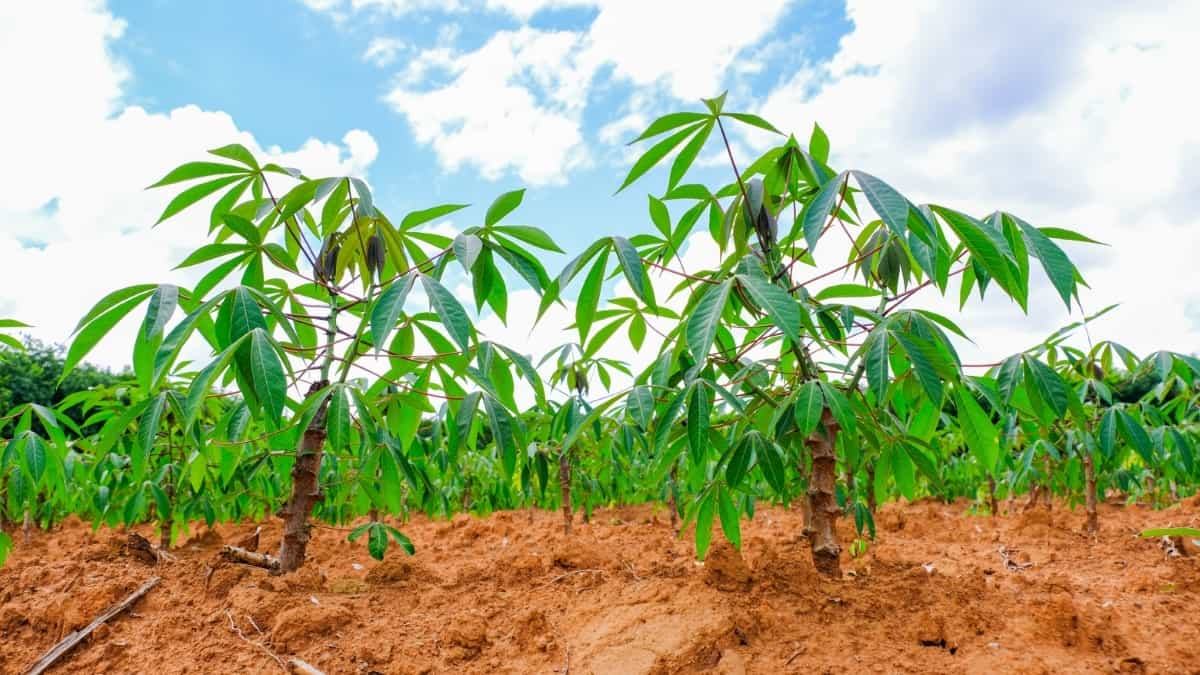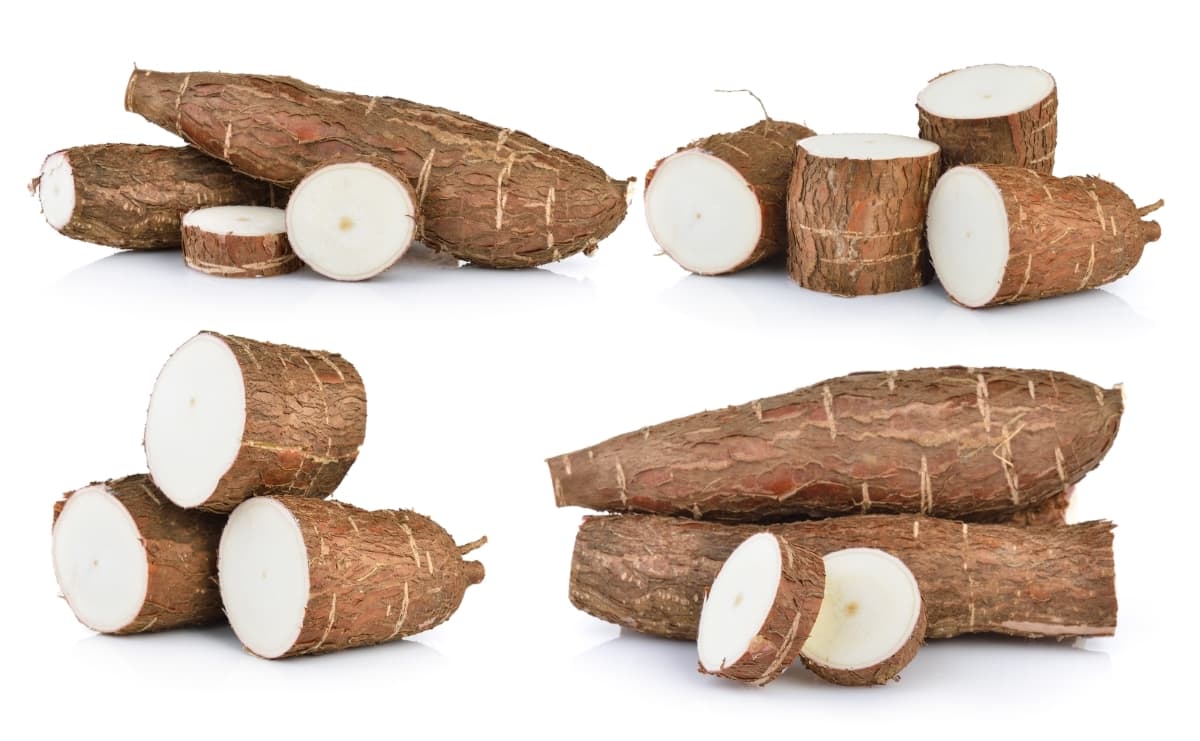Cassava is highly valued for its versatility and resilience, but to achieve optimal yield and quality, proper fertilization strategies are crucial. Fertilizers play a vital role in Cassava cultivation by providing essential nutrients that may be deficient in the soil. Proper fertilizer management offers several benefits to Cassava farmers.
Benefits of Proper Fertilizer Management
Proper fertilizer management plays a crucial role in maximizing the yield and quality of Cassava crops. One of the key benefits of proper fertilizer management is improved nutrient uptake by Cassava plants. When fertilizers are applied correctly, they supply the necessary macro and micronutrients directly to the root zone, ensuring optimal absorption by the plant roots.

Fertilizer Management in Cassava
Nutrient Requirements of Cassava
Understanding the Essential Nutrients for Cassava Growth
One of the primary nutrients required by Cassava is nitrogen (N). Nitrogen is responsible for stimulating leaf and stem growth, as well as enhancing chlorophyll production. Phosphorus (P) is another important nutrient that aids in root development and promotes flowering and fruiting. Potassium (K) is essential for improving water uptake efficiency in Cassava plants. Magnesium (Mg) is necessary for synthesizing chlorophyll and promoting enzyme activity.
Nutrient Deficiency Symptoms in Cassava Plants
Cassava plants, like any other crop, require specific nutrients to grow and thrive. One common nutrient deficiency in Cassava is nitrogen (N). If your plants have pale yellow leaves that gradually turn white or brown from the bottom upwards, it could indicate a lack of nitrogen. Another vital nutrient for Cassava growth is phosphorus (P), which helps with root development.
If you notice stunted growth and underdeveloped roots, it may be a sign of phosphorus deficiency. Potassium (K) deficiency can also affect Cassava plants. Look out for yellowing leaf margins or interveinal chlorosis – when the area between the veins turns yellow while the veins themselves remain green. Magnesium (Mg) deficiency can lead to interveinal chlorosis as well but often starts at the tips of older leaves before progressing toward younger ones.
Types of Fertilizers for Cassava
Different Fertilizer Formulations and Their Application
One common type of fertilizer is the NPK (Nitrogen, Phosphorus, Potassium) blend, which provides a balanced mix of these three primary macronutrients. This formulation is suitable for promoting overall plant development and enhancing root formation in early growth stages. Another popular option is organic fertilizers, which are derived from natural sources. These fertilizers not only provide essential nutrients but also improve soil fertility and microbial activity.
Organic vs. Inorganic Fertilizers: Pros and Cons
Organic fertilizers are derived from compost, manure, or bone meal. One of the advantages of organic fertilizers is their ability to enhance soil fertility and promote long-term sustainability. They also tend to be less harmful to the environment compared to synthetic alternatives.
On the other hand, inorganic fertilizers are manufactured chemically using mineral salts. These fertilizers can deliver nutrients quickly and in precise amounts. Commercial farmers commonly use inorganic fertilizers due to their efficiency in increasing crop yields. However, they can also have drawbacks, such as potential water contamination if not applied properly or excessive use, leading to nutrient imbalance.
Soil Testing and Analysis
Importance of Soil Testing in Determining Fertilizer Needs
Soil testing plays a key role in determining the fertilizer needs of Cassava plants. It provides valuable insights into the nutrient content and pH level of the soil, helping farmers make informed decisions about which fertilizers to apply. By conducting regular soil tests, farmers can identify any deficiencies or imbalances in essential nutrients like nitrogen, phosphorus, and potassium.
Conducting Soil Tests and Interpreting Results
Soil testing is a crucial step in effective fertilizer management for Cassava cultivation. By analyzing the nutrient levels and pH of your soil, you can determine its fertility status and identify any deficiencies or imbalances that may be hindering crop growth. Collecting representative soil samples from different areas of your field. Dig down to a depth of about 20 centimeters and take small samples at regular intervals.
In case you missed it: Cassava Processing Plant Business Plan: A Profitable Venture for Cassava Farmers

Fertilizer Application Methods
Techniques for Applying Fertilizers to Cassava Plants
When it comes to applying fertilizers to Cassava plants, several techniques can enhance nutrient uptake and promote optimal growth. One common method is broadcasting the fertilizer evenly across the entire field. This allows for a widespread distribution of nutrients, ensuring that each plant has access to the necessary elements for healthy development.
Timing and Frequency of Fertilizer Application
Timing and frequency of fertilizer application play a crucial role in maximizing Cassava yield. During the early establishment stage, it is important to apply fertilizers before planting to provide essential nutrients for root development. This helps in establishing a strong foundation for robust growth.
Subsequent applications should be timed based on the specific nutrient requirements during different growth stages. The frequency of fertilizer application also plays a vital role. Applying small doses frequently allows for better nutrient absorption by the plant roots compared to applying large amounts at once.
Fertilizer Ratios for Cassava
Ideal Nutrient Ratios for Various Growth Stages
When it comes to Nutrient ratios for Cassava growth stages, During the early vegetative stage, Cassava plants require higher amounts of nitrogen (N) to promote leaf development and overall plant vigor. A ratio of 4:1:2 NPK (nitrogen-phosphorus-potassium) is commonly recommended during this stage. As the plants transition into the later vegetative stage, a ratio of 3:1:2 NPK can be used to maintain healthy foliage while also encouraging root development.
Once Cassava enters its reproductive phase, phosphorus (P) becomes more important for promoting flower formation and fruit set. A ratio of 1:3:2 NPK is often advised during this stage to support optimal flowering and seed production. As harvest approaches, potassium (K) takes on greater significance in enhancing tuber quality and storage capacity. A ratio with a higher proportion of potassium, such as 2:1:5 NPK, can be beneficial during this maturation phase.
Adjusting Fertilizer Formulations Based on Soil Conditions
To determine the right fertilizer formulation for your soil conditions, conducting a thorough soil analysis is crucial. This analysis tells valuable insights into the pH levels, organic matter content, and nutrient deficiencies present in your soil. For example, if your soil is deficient in nitrogen, you may need to increase the amount of nitrogen-based fertilizers applied. Similarly, if phosphorus or potassium levels are low, specific formulations targeting these nutrients can be added.
Nutrient Uptake and Utilization
How Cassava Absorbs and Utilizes Nutrients
Cassava, a versatile and resilient crop, has its unique way of absorbing and utilizing nutrients from the soil. When it comes to Cassava nutrient uptake, Cassava primarily relies on its extensive root system. The roots of the Cassava plant are equipped with specialized structures called laticifers, which facilitate the absorption of nutrients from the surrounding soil.
Factors Affecting Nutrient Uptake Efficiency
Nutrient uptake efficiency plays a crucial role in maximizing Cassava yield and quality. One key factor is soil pH, which affects nutrient availability. Cassava performs best in slightly acidic soils with a pH range of 5.5 to 6.5. If the pH is too high or too low, certain essential nutrients may become inaccessible to the plant, leading to deficiencies. Another important factor is soil organic matter content. Organic matter increases water-holding capacity while also providing essential nutrients through decomposition.
Environmental Considerations
Minimizing Environmental Impact of Fertilizer Use
One way to minimize the environmental impact of fertilizer use is by practicing precision agriculture. This approach involves applying fertilizers with utmost accuracy, targeting specific areas where they are needed most. Another effective strategy is using slow-release or controlled-release fertilizers.
Unlike traditional fast-acting formulations that release nutrients all at once, these specialized fertilizers provide a steady supply of nutrients over an extended period. This not only ensures optimal plant uptake but also minimizes leaching and runoff into the environment.
Sustainable Fertilizer Practices for Cassava Farming
One key aspect of Sustainable fertilizer practices is using organic fertilizers. Organic fertilizers provide key nutrients to the soil while improving its structure and water-holding capacity. This reduces the need for synthetic fertilizers and minimizes their environmental impact. Another practice is precision nutrient application.
By conducting regular soil tests, farmers knows the specific nutrient requirements of Cassava plants at different growth stages. This allows for targeted fertilizer application, preventing overuse and reducing wastage. Additionally, adopting integrated nutrient management techniques can help optimize fertilizer use.
Monitoring and Troubleshooting
Regular Monitoring of Cassava Health and Fertilizer Effects
Regular monitoring of Cassava health and the effects of fertilizer application is crucial for ensuring optimal crop growth and yield. One effective method for monitoring Cassava health is visual inspection. Farmers should regularly inspect their plants for any abnormalities in growth patterns, leaf color, or overall plant vigor. Yellowing leaves may indicate nitrogen deficiency, while stunted growth could be a sign of phosphorus or potassium deficiency.
Addressing Issues Related to Over-Fertilization or Under-Fertilization
Effective fertilizer management is crucial for maximizing Cassava yield and quality. Over-fertilization occurs when excessive amounts of nutrients are applied to the soil. This can result in nutrient imbalances, toxicity, and environmental pollution. On the other hand, under-fertilization means that the soil lacks essential nutrients required for optimal plant growth. This can lead to poor crop performance with smaller yields and lower starch content in Cassava roots.
In case you missed it: Cassava Chips Making Business: A Profitable Venture for Cassava Farmers

To address these issues effectively, farmers need to monitor their crops’ nutrient levels through soil testing regularly. By analyzing the results from soil tests and identifying any deficiencies or excesses in specific nutrients like nitrogen (N), phosphorus (P), potassium (K), calcium (Ca), magnesium (Mg), or micronutrients like iron (Fe) or zinc (Zn), farmers can adjust their fertilizer application rates accordingly.
Best Practices for Fertilizer Management
Strategies for Optimizing Cassava Yield and Quality
One effective strategy for optimizing Cassava yield and quality is to implement crop rotation. By alternating the cultivation of Cassava with other crops, you can decrease the risk of pest and disease outbreaks while also promoting soil health. Another approach is intercropping, which involves growing different crops together in the same field. For example, planting legumes alongside Cassava can help fix nitrogen in the soil, providing fertilizer for Cassava plants.
Applying organic mulch around Cassava plants helps conserve moisture, suppress weed growth, and provide nutrients as it decomposes over time. This practice improves soil structure and fertility while reducing erosion. Proper water management is crucial for optimizing Cassava yield and quality. Irrigation should be timely and sufficient to meet the plant’s needs without causing waterlogging or drought stress.
Case Studies of Successful Fertilizer Management in Cassava Farming
Case Study 1: The Abundant Harvest
In a small village in Nigeria, farmers implemented an effective fertilizer management strategy for their Cassava crops. They conducted soil tests and discovered that the soil lacked essential nutrients like nitrogen and potassium. Based on the test results, they applied a balanced fertilizer formulation at the recommended rates during planting. As a result, their Cassava plants grew vigorously with lush green leaves and strong stems.
Case Study 2: Increased Yield and Quality
A commercial Cassava farm in Thailand adopted precision fertilizer application techniques to optimize yield and quality. By using controlled-release fertilizers, they ensured that the nutrients were gradually released over time, reducing nutrient leaching and maximizing plant uptake efficiency. This resulted in higher yields per hectare as well as improved starch content and root size.
In case you missed it: 1 Acre Cassava Cultivation Project Report: Production Cost and Profit

Conclusion
Effective Cassava fertilizer management is crucial for boosting its yield and ensuring the health and productivity of Cassava plants. By understanding the essential nutrients for Cassava growth, conducting soil tests to determine fertilizer needs, and applying fertilizers at the right time and in the correct ratios, farmers can optimize their crop’s potential.
- Feed Your Flock for Less: Top 10 Tips to Save on Chicken Feed
- Ultimate Guide to Ossabaw Island Hog: Breeding, Raising, Diet, and Care
- Hatching Answers: The Top 10 Reasons Your Chickens Aren’t Laying Eggs
- Eggs and Economics: Breaking Down the Cost of Raising Backyard Chickens
- Defend Your Greens: Proven Methods to Keep Iguanas Out of Your Garden
- Ultimate Guide to Cinnamon Queen Chicken: A Comprehensive Guide for Beginners
- Ultimate Guide to California Tan Chicken: Breeding, Raising, Diet, Egg-Production and Care
- Ultimate Guide to Marsh Daisy Chicken: Breeding, Raising, Diet, and Care
- 10 Types of Chicken Farming Businesses You Can Start for Profits